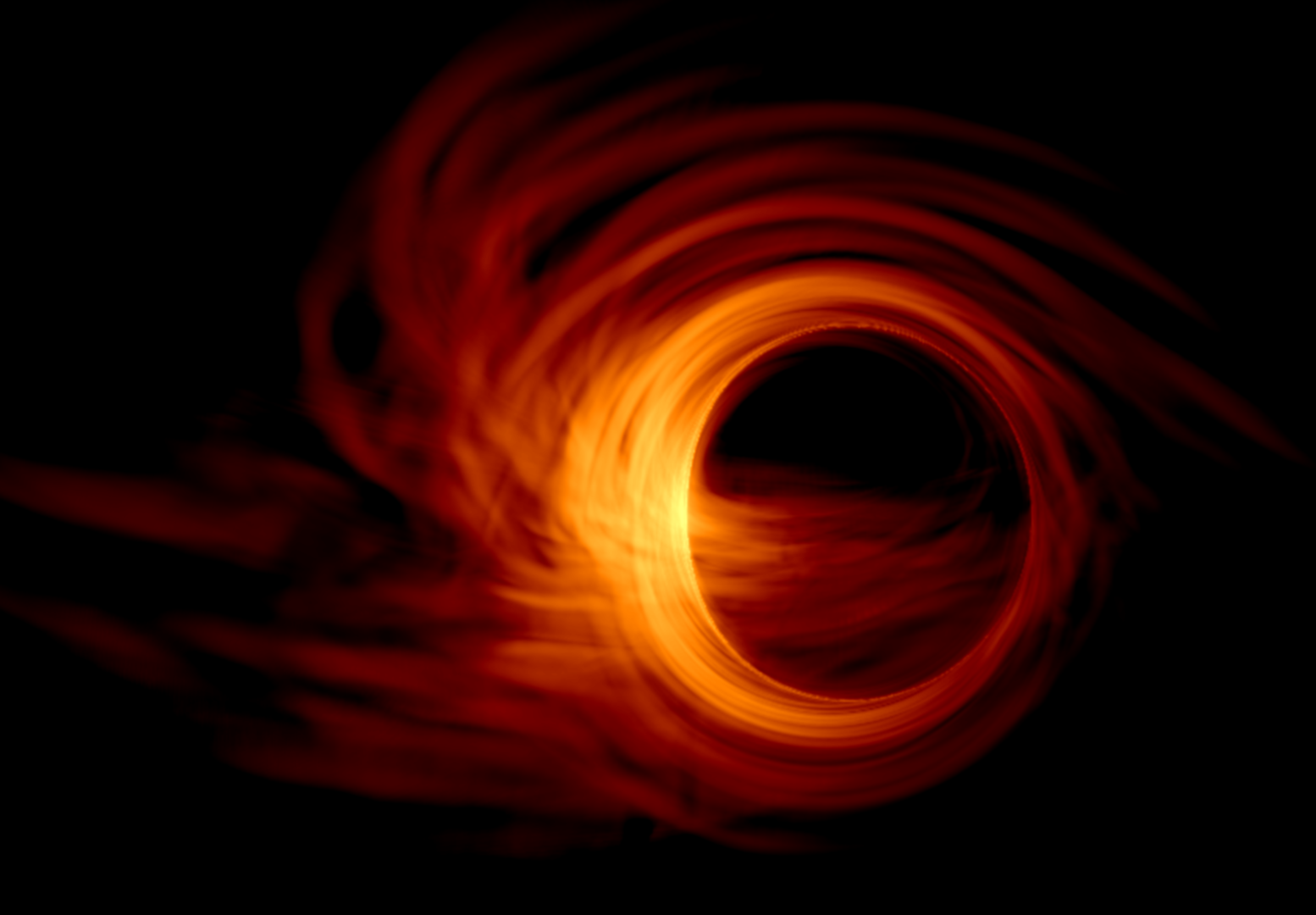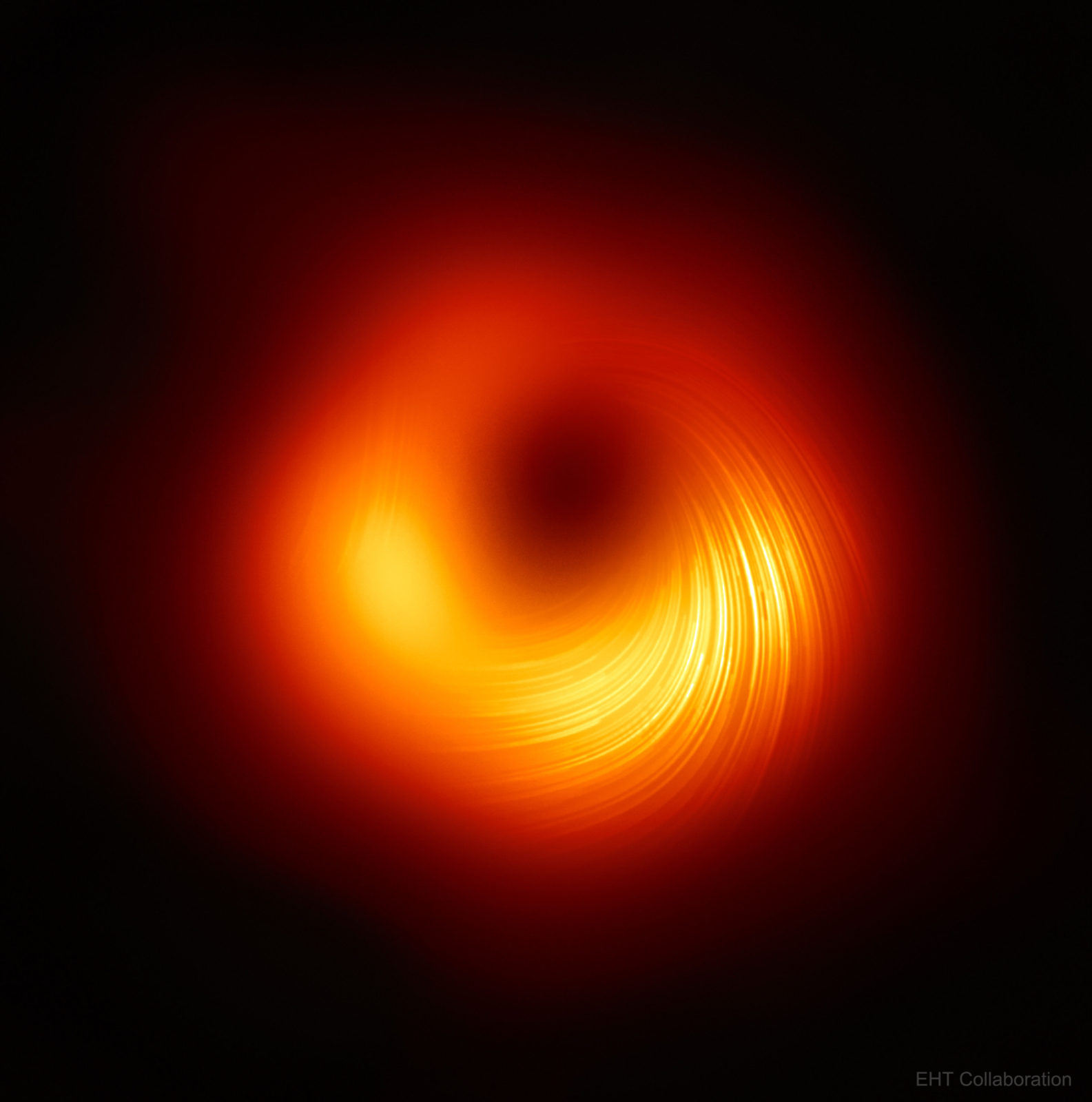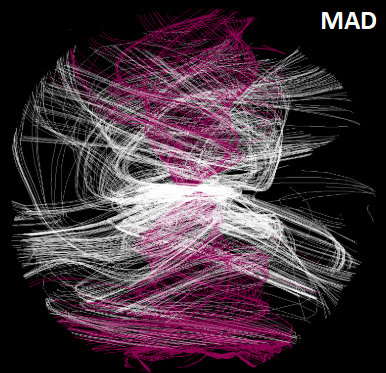Quasi-periodic oscillations appear to be a common characteristic of accreting systems and have been observed in black hole and neutron star X-ray binaries, alongside active galactic nuclei and even ultraluminous X-ray sources. The focus of this blog post is quasi-periodic oscillations in black hole X-ray binaries. Black hole X-ray binaries are comprised of a stellar mass black hole feeding on a nearby star. Material siphoned off the star by the black hole swirls around the black hole, forming an accretion disk that shines brightly at X-ray frequencies (see Figure 1). Not all of the material in the disk is consumed by the black hole- hydro-magnetic processes in the inner regions…
Read More >>A bridge between observation and numerical simulation: General-relativistic radiative transfer calculations
As introduced in the previous posts, nowadays it is well known that spacetime is not always ‘flat’ but can be distorted by the presence of massive (dense) objects, according to Albert Einstein’s general theory of relativity. The amount of distortion in spacetime depends on the mass of the object and on how compact it is. Prof. John Wheeler, a theoretical physicist in the US, told that “Spacetime tells matter how to move; matter tells spacetime how to curve“. According to Einstein’s theory, light always follows the shortest path through spacetime, implying that the light paths are no longer straight lines but can be curved in the immediate vicinity of massive…
Read More >>The Science Behind the Solar Eclipse
An eclipse is defined as a total or partial obscuring of one astronomical body by another. For millennia, cultures all over the world have witnessed, marveled at, and feared eclipses. For residents of planet Earth, the two most interesting and important eclipses are of eclipses the Sun (Solar eclipse) and the Moon (Lunar Eclipse). A lunar eclipse occurs when Earth comes between the Sun and the Moon. The Moon shines brightly in the sky primarily because it reflects most of the light receives from the Sun. However, during the lunar eclipse, the Earth obstructs the path of light from the Sun to the Moon, leaving the Moon behind in its…
Read More >>Questioning the Heavens
May 2021 marks a significant milestone in planetary exploration, when China’s spacecraft Tianwen-1 softly landed on the surface of Mars, and deployed the rover Zhurong. The complete success of China’s first interplanetary mission makes China the third country landing on Mars (after the Soviet Union and the United States), the second country releasing a Martian rover (after the US), and the first country that achieved orbiting, landing and roving in the first mission to Mars. “Tianwen (天问)” is the name of China’s upcoming series of planetary missions. The name means “questions to heaven”, taken from the long classical poem written by the ancient Chinese poet Qu Yuan. The poem conveys…
Read More >>Unveiled shape of magnetic field around black hole from polarized light
A couple of weeks ago, the Event Horizon Telescope (EHT) collaboration has revealed, for the first time, the black hole image of the M87 in polarized light. This is the next big step closer to better understanding how accreting materials evolve and how M87 launches the energetic jets, which extend at least 5000 light-years. Light becomes polarized when it propagates through filters like the lenses of polarized sunglasses. Such sunglasses have been used to protect our eyes and enhance our vision by reducing the glare of the sun or the reflected light. Likewise, we can see better the region around the black hole from the polarized light, which is emitted…
Read More >>MasterChef Universe : Spaghetti(fication) with Black Holes (Part III)
This is the final part of the three part series on Spaghettification where finally black holes come into the picture! Black Holes Black holes are regions of space(time) where gravity becomes is so strong that that not even light can escape. The size of this spherical region is specified by a radius called the Schwarzschild radius (in honor of the German physicist and astronomer Karl Schwarzschild). The radius of a black hole is proportional to it’s mass. For example: a black hole having the same mass as our Sun (what astronomers call 1 solar mass) is like a sphere having a Schwarzschild radius of 2.8 km. In comparison the sun’s…
Read More >>Self-similarity: Properties and Applications
In China, there is a popular nursery rhyme: Once upon a time there was a mountain, in which there was a temple, in which there was an old monk telling a story to a little monk. The story he was telling is: Once upon a time there was a mountain, in which there was a temple, in which there was an old monk telling a story to a little monk…… It continues endlessly until the child falls asleep. This rhyme is a typical manifestation of the concept of self-similarity. In mathematics, self-similarity describes the property of an object if a part of it resembles the whole object. In the aforementioned…
Read More >>Persevering with Mars Exploration
February 18th 2021, 12:55 PST. A room in California erupts in cheers and applause as mission control watches its robot land on another planet. After years of preparations and almost seven months of space travel, Perseverance arrived safe and sound on the Red Planet, ready to study its environment for a planned duration of two years. It will join NASA’s Mars Exploration Program lineage of four martian rovers, making it the fifth since 1997 to explore this curious planet. But why do we care about Mars so much? Mars has always been an object of wonder, from the idea that a civilization could inhabit it to Elon Musk’s plans for…
Read More >>To be MAD or not to be MAD: problematic naming conventions in astronomy
Last week’s blog post was entitled To be MAD or not to be MAD. In it, my colleague Doosoo Yoon did a good job of discussing two models used to describe the accretion disks of matter flowing onto a black hole. These models started a discussion in our research group meeting this week for a different reason: the names of the two models MAD and SANE are pretty ableist. As Doosoo pointed out, MAD stands for Magnetically Arrested Disk and SANE stands for Standard And Normal Evolution. Now the MAD model which was created first, about 20 years ago, has a simple acronym and is widely used in the astronomy…
Read More >>To be MAD or not to be MAD
Infalling on to the black hole may drive materials crazy. How on earth can they keep their sanity while all bodies undergo extreme gravity? These days, most researchers who are simulating an accreting flow around a black hole choose the condition of the accretion disc between the “SANE” and “MAD”. Now you may think that the infalling materials would be CRAZIER in the “MAD” disc than the other. In fact, the component for dividing “SANE” and “MAD” is the strength of poloidal magnetic fields. “SANE” stands for Standard and Normal Evolution, and “MAD” stands for Magnetically Arrested Disc. Over the decades, the magnetic field structures around the central black hole…
Read More >>



